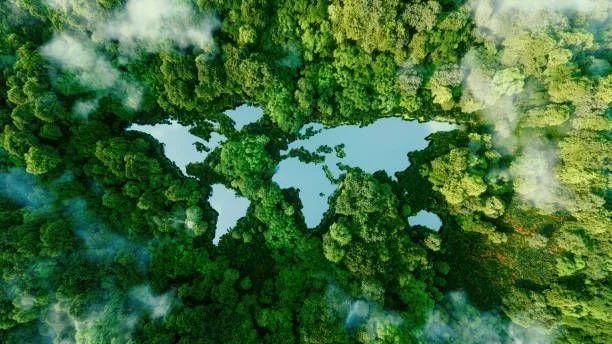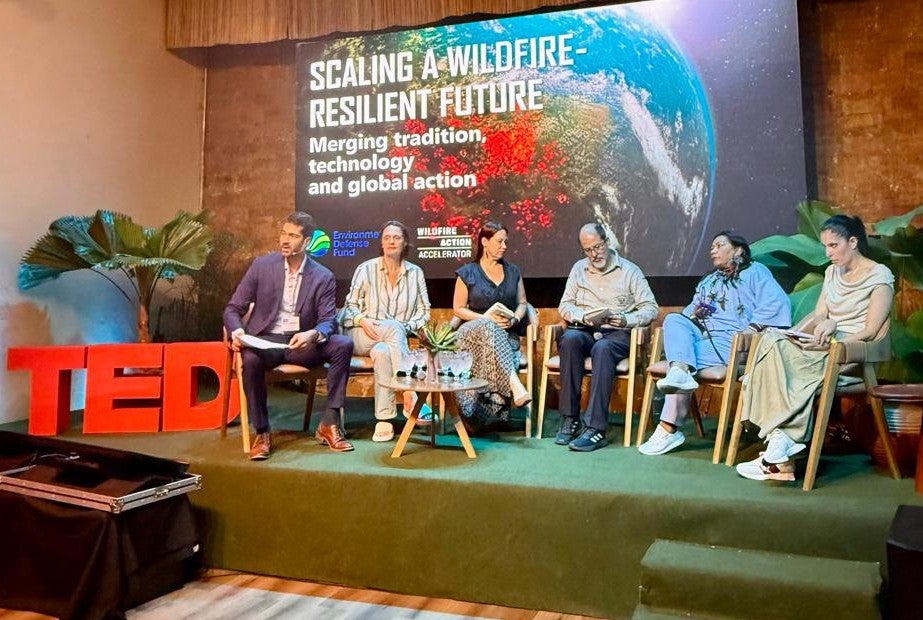Global Stocktake report highlights opportunities for ambitious climate action
This blog was co-authored by Juan Pablo Hoffmaister, AVP for Global Climate Cooperation, and Alice Alpert, Senior Climate Scientist at Environmental Defense Fund.
Earlier this month, the UN released a report synthesizing the technical assessment process of the first Global Stocktake (GST) of the Paris Agreement. The report found that the world is making some progress on fighting climate change and a path remains to reach the Paris goal of limiting global warming to 2°C. However, it warned that much remains to be done and such action must accelerate.
A critical takeaway from the report is that clear, actionable opportunities to reach the Paris Agreement goals exist. Some of the best, most impactful solutions include actions on adaptation, mitigation and finance that all countries have within reach.
The report contains four key messages to inform and drive such action:
- Reduce methane emissions: Methane is a shorter-lived but more powerful greenhouse gas than carbon dioxide. The GST Synthesis report notes that low-cost and even profitable opportunities to reduce methane emissions exist, most of all in the oil and gas sector.
- Invest in natural climate solutions: Natural climate solutions, or nature-based solutions, have the potential to help the world tackle climate change and biodiversity loss. By conserving nature and natural ecosystems, we can ensure they act as high capacity carbon sinks.
- Scale up adaptation: The assessment finds opportunities for adaptation across systems and sectors, but we are still to address the challenge in accessing sufficient financial support for the wide-ranging expenses disasters impose.
- Accelerate the transition to clean energy: The GST Synthesis report is clear that achieving the Paris goals requires phasing out all unabated fossil fuels. But a fossil fuel phase-out will only work if it is accompanied by a rapid acceleration of renewable energy deployment. Deploying these solutions and technologies requires smart finance deployment.
Pursuing high impact solutions
From dozens of expert presentations and hundreds of submissions from parties and non-party stakeholders alike, the GST synthesis report points to immediate opportunities for meaningful climate action within every country’s reach. Below we highlight a few high impact solutions that are ready to implement and have the capability to make deep emissions reductions.
Methane
The GST synthesis report notes that methane concentrations in 2019 were higher than at any time in the last 800,000 years. Last year the Intergovernmental Panel on Climate Change found that reductions of methane emissions would lower peak warming and reduce the likelihood of overshooting warming limits. Early methane mitigation is also critical for reducing the risk of catastrophic events such as the loss of summer Arctic sea ice.
But it’s not all bad news. The report also recognizes that there are low and even negative cost (i.e., profitable) opportunities to reduce methane emissions, most of all in the oil and gas sector. Options exist for both oil and gas producing countries and importers, including policy instruments based on methane emission quantification and monitoring, reporting, and verification. For producers, additional options include direct regulatory strategies such as mandating regular leak detection and repair surveys, restrictions on venting and flaring, and equipment technology standards.
In fact, readily available methods to reduce methane can deliver 0.25℃ of avoided temperature rise by 2050. For this reason, all NDCs should strive to reduce methane emissions.
Natural Climate Solutions
Natural climate solutions, or nature-based solutions, have the potential to help the world tackle climate change and biodiversity loss. By conserving nature and natural ecosystems, we can ensure they act as high-capacity carbon sinks, able to reduce emissions or sequester 7.3 GtCO2e per year. At the same time, we preserve forests, biodiversity, soil health, water quality and help local communities thrive.
To be most effective, we need to implement natural climate solutions rapidly. For example, we must end and reverse tropical deforestation before the end of this decade to prevent tropical forests from reaching a tipping point at which they’ll become net carbon emitters.
The GST Report emphasizes that both halting and reversing deforestation by 2030, and restoring and protecting natural ecosystems will result in large-scale CO2 absorption and co-benefits. One tool to help scale up forest conservation financing is high integrity carbon markets. Carbon markets with high social and environmental integrity can cut carbon emissions substantially from avoided deforestation, enable greater climate ambition, and support Indigenous and other forest peoples’ struggles to protect their forests and resources.
Adaptation
The GST synthesis report finds opportunities for adaptation across systems and sectors, many of which have been mainstreamed into existing development priorities and processes. EDF has found that a core challenge is access to sufficient financial support for the wide-ranging expenses disasters impose. Low-income households, in particular, need adequate financial resources to recover from natural disasters and avoid backsliding on hard-earned financial gains.
One innovation that can provide fast and flexible dollars to the most vulnerable people after a disaster is parametric risk transfer insurance, which insures against the occurrence of a specific event with a set amount based on the magnitude of the event, as opposed to the magnitude of the losses in a traditional insurance scheme. EDF is partnering with others to develop a parametric product that will pay the low-income neighborhoods following extreme rain.
Finance
The GST Synthesis report is clear: achieving the Paris goals requires phasing out all unabated fossil fuels. But a fossil fuel phase-out will only work if it is accompanied by a rapid acceleration of renewable energy deployment, and the availability of other technologies needed to electrify the transport sector. Scaling up these solutions and technologies requires the deployment of finance. To this end, the GST concludes the technologies that already exist, “need to be rapidly deployed, together with accelerated innovation, development, and transfer of new technologies, to support the needs of developing countries.”
The GST report finds that a transformation of the global financial system is required to scale up climate finance. Such transformation is within reach through the global reform of multilateral development banks to adjust investment plans and portfolios in order to increase their investments in decarbonization and resilience projects to align with the goals of the Paris Agreement.
COP28 and beyond
A successful Global Stocktake will result in NDCs that put us on a path to reach the goals of the Paris Agreement. To do this, at COP28 the United Arab Emirates COP presidency and other key stakeholders must deliver an ambitious, solutions-oriented outcome for the GST process. This means the GST must deliver clear signals on high-impact opportunities to reduce emissions and adapt to climate change. And it must deliver clear expectations for action in 2024 and 2025 and the revised climate action plans countries put forward in their NDCs.













